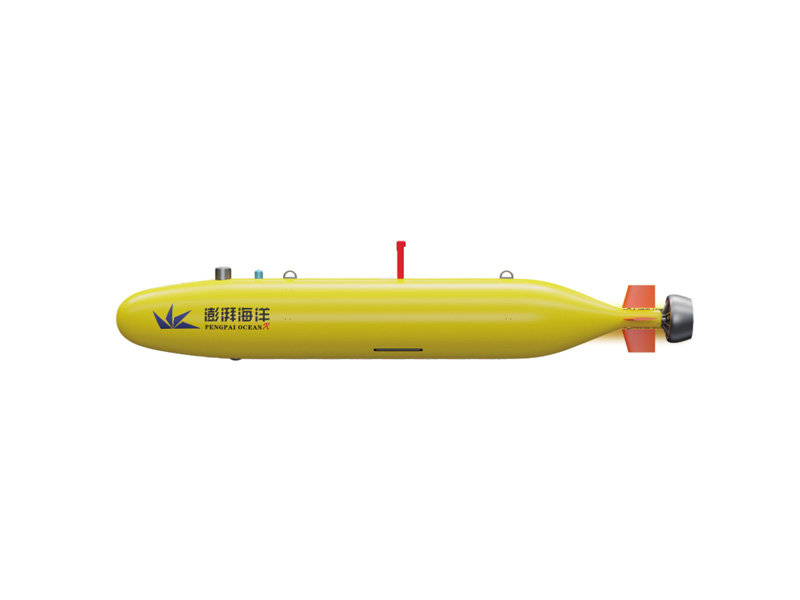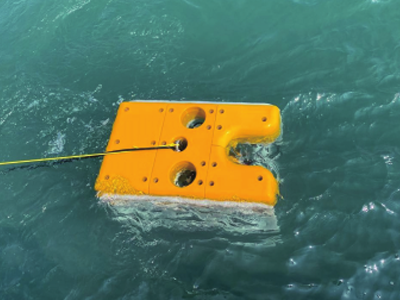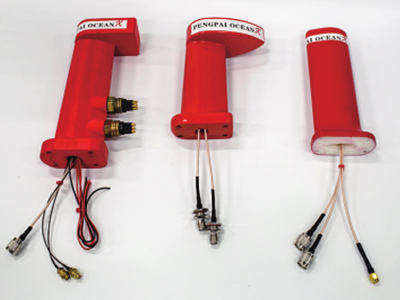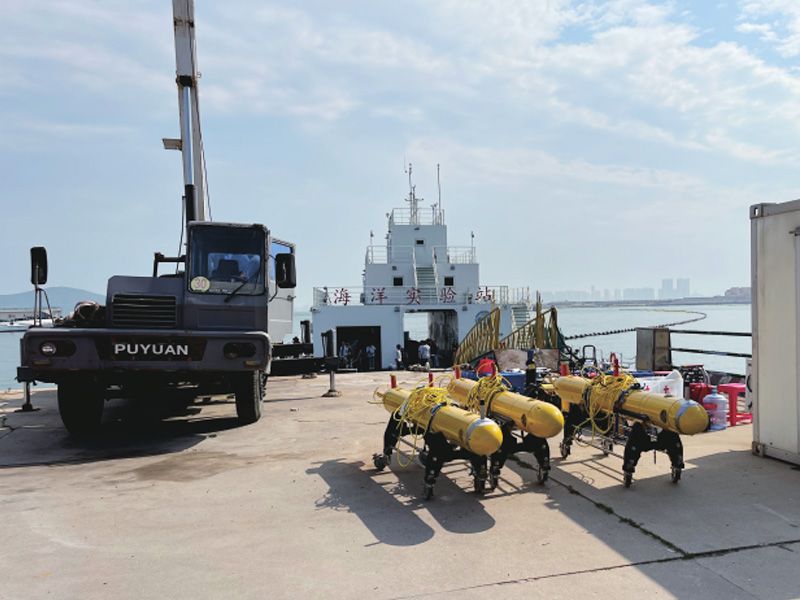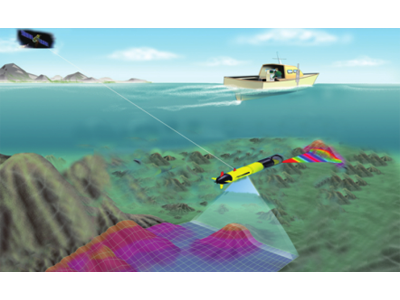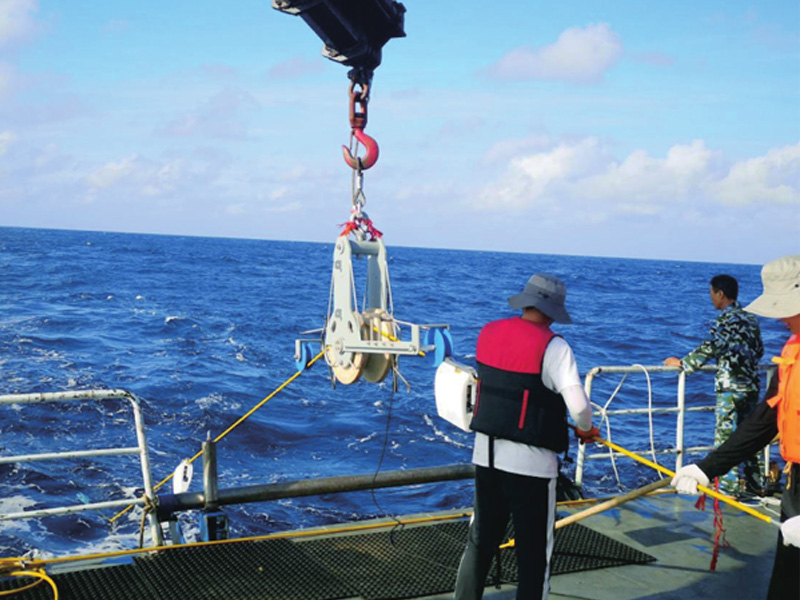Volume 27, Issue 4, 2019
Image
Review
Image
Author information
Author: Wen Haibing, Song Baowei, Zhang Kehan, Yan Zhengchao
Unit: Navigation College of Northwest Polytechnic University, Xi'an, Shaanxi, 710072
Fund project: Supported by Shaanxi Natural Science Basic Research Program (2018JM5033)
Summary
Compared with the traditional wet-plug underwater power supply method, the magnetic coupling resonant radio power transmission (MCR-WPT) technology has the advantages of good insulation, simple structure, high safety of power transmission, and convenient operation, and has a good application prospect in the power supply of marine electromechanical equipment such as underwater vehicles. Firstly, the paper introduces the basic structure and working principle of MCR-WPT technology, focusing on the particularity of MCR-WPT in marine environment; The research status and hot issues of underwater MCR-WPT technology are explained from the aspects of mechanism research and application research; Finally, the key problems to be solved and the development trend of the technology are analyzed, including the power transmission mechanism, the design of electromagnetic coupler, the adaptability of the system to the marine environment, electromagnetic compatibility and the application of new materials. The purpose of this study is to provide reference for the development and application of underwater MCR-WPT technology in China.
0 Introduction
The ocean is rich in biological resources, mineral resources and renewable energy. It is an important part of the global life support system and also a valuable asset for the sustainable development of human society. Underwater vehicles and other marine electromechanical equipment are important tools for human development and utilization of marine resources. The energy problem is the main factor that restricts the underwater electromechanical equipment to work continuously for a long time in the ocean. Due to the volume limitation of the underwater vehicle, its battery is limited and can not meet the working requirements. At present, the underwater vehicle mainly floats to the sea at a fixed time and uses the mother ship or nearshore cable for energy supply. This work mode is inefficient, a large amount of energy is consumed in the round trip of the aircraft, and the concealment is poor. At present, the ocean observation network being built in developed countries in Europe and the United States [1] mainly includes submarine base stations, sensors, underwater vehicles and other equipment, and transmits the detection data back to the ground workstation through optical fiber networks, buoys and other means to achieve all-weather real-time monitoring of various marine environmental parameters. China has also built ocean observation networks in the East China Sea and the South China Sea [2]. The submarine base station in the ocean observation network provides the underwater electric energy supply node for the underwater vehicle. When the electric energy is about to run out, the underwater vehicle navigates to the nearby submarine base station, and automatically docks with the submarine base station. The radio energy transmission technology is used for electric energy supply. After the electric energy supply is completed, the relevant tasks continue to be performed. Thus, the working continuity and concealment of underwater vehicles can be significantly improved. Applying radio energy transmission technology to underwater electric energy supply, the physical connection between the electric energy sending end and receiving end is not required, which can avoid the safety hazards such as sparks, electric leakage, wear and carbon deposition caused by the contact of metal connectors in the traditional wet-plug electric energy supply method [3], and can effectively improve the safety of underwater vehicle energy supply.
At present, according to the different working principles, radio energy transmission mainly includes electric field coupling, magnetic field coupling, microwave radiation, laser and ultrasonic. Because seawater conducts electricity, it is difficult to use electric field coupling in marine environment; The magnetic field coupling type can be divided into inductive coupling type and vibration coupling type. The inductive coupling type is based on the transformer principle, and its transmission distance is small, only millimeter level; The essence of microwave radiation and laser radio energy transmission is to use electromagnetic beams instead of wires. Its disadvantages are low transmission efficiency, high working frequency, and serious impact on organisms; The use of ultrasonic to transmit electric energy underwater requires efficient transducers, and the efficiency of electric energy transmission is low. Magnetically-coupled resonant radio power transfer technology (MCR-WPT) system can achieve high power and efficient transmission of electric energy at short and medium distance, especially suitable for power supply of underwater vehicles and other electromechanical equipment in marine environment.
At present, there are many literatures about radio energy transmission technology, but there are few literatures about underwater MCR-WPT. Niu Wangqiang [4] summarized the research progress of underwater radio energy transmission, but his research focused on the technical indicators of the system. In this paper, the research progress of underwater MCR-WPT is summarized, starting from the introduction of its working principle, the current research status and hot issues of MCR-WPT at home and abroad are analyzed and explained, and the key issues and development trends to be solved are discussed.
1 Basic structure and working principle of underwater MCR-WPT
1.1 Basic structure
The typical structure of MCR-WPT system is shown in Figure 1. It is mainly composed of power supply, high-frequency inverter circuit, transmission end compensation circuit, electric energy transmission coil, electric energy receiving coil, receiver end compensation circuit, rectifier filter circuit and load. After high-frequency inversion, the electric energy of the submarine base station is output to the transmitting coil. Under the effect of magnetic coupling resonance, the receiving coil and the transmitting coil generate coupling resonance. After rectification and filtering, the received electric energy can be used for battery charging and other power supply requirements, thus realizing the contactless transmission of electric energy from the submarine base station to the underwater vehicle.
Figure 1 Typical structure schematic diagram of magnetically coupled resonance radio energy transmission system
A typical MCR-WPT system is a two-coil structure, including electric energy sending coil and electric energy receiving coil, as shown in Figure 2 (a). Kurs et al. [5] proposed a four-coil structure, as shown in Figure 2 (b). Its system includes two resonance coils, one power excitation coil connected to the power supply and one load coil connected to the load. The structure can match the power supply and load, and realize the isolation between the power supply and the electric energy sending coil, and the isolation between the load and the receiving coil. Zhou Jie [6] adopted a three-coil structure in the underwater MCR-WPT system: adding a resonant relay coil in the electric energy sending coil and receiving coil. Zhang et al. [7] proposed a three-coil structure consisting of two electric energy transmitting coils and one receiving coil, as shown in Figure 2 (c).
1.2 Working principle
Using the circuit mutual inductance theory, the equivalent circuits of the three MCR-WPT system structures mentioned above can be obtained respectively, as shown in Figure 2 [5,7] (taking the series-series (S-S) compensation of the series capacitance at the sending coil side and the series capacitance at the receiving coil side as examples).
Figure 2 Equivalent circuit diagram of basic structure of MCR-WPT system
In the MCR-WPT system, the power supply is supplied to the electric energy transmission coil. When the frequency is the system resonance frequency, resonance will occur on the side of the transmission coil, which will generate large current in the coil and establish a strong magnetic field. Due to the effect of resonance, the electric field energy stored in the capacitor on the side of the transmitting coil can be exchanged with the magnetic field in the inductive coil continuously. On the receiving coil side, because the magnetic fields of the receiving side induction coil and the transmitting side induction coil are coupled with each other, the alternating magnetic field induces current in the receiving coil. When resonance occurs at one side of the receiving coil, the magnetic field energy of the induction coil and the electric field energy in the capacitor can continuously exchange energy, thus realizing the wireless transmission of electric energy from the sending end to the receiving end, and then to the load. The principle of system power transmission in four-coil structure and three-coil structure is similar to this. The advantage of two-coil structure is that the structure is simple, but the power transmission performance of the system is easily affected by coil offset; The four-coil structure isolates the influence of high-frequency power supply and load on the resonant coil, which is convenient for impedance matching. The disadvantage is that the number of coupling increases and the loss increases in seawater; The three-coil structure can appropriately increase the transmission distance, reduce the eddy current loss, and reduce the impact of the resonance coil offset on the power transmission performance of the system. The disadvantage is that the multi-coil coupling is easy to cause the detuning problem.
2 Research status and hot issues of underwater MCR-WPT
2.1 Mechanism study
2.1.1 Eddy current loss
Compared with air, seawater has good conductivity (air conductivity is 0 s/m, seawater conductivity is 1~6 s/m). When there is high frequency alternating current in the coil, the alternating high frequency magnetic field will be generated. The alternating magnetic field will generate vortex electric field, and then generate vortex current in the sea water, and thus generate large eddy current loss. Compared with air, the transmission efficiency and performance of MCR-WPT system in seawater will be reduced. The study of eddy current loss is of great significance to reveal the mechanism of underwater MCR-WPT.
Chen Ying's team [8-9] respectively studied the eddy current loss of the electromagnetic coupler with the can-type magnetic core and the PM-type magnetic core using the method of combining theoretical derivation and finite element simulation. According to the research on the can-type magnetic core, the energy loss caused by eddy current loss is mainly generated at the core window, and sealing the core window with insulating sealant can effectively reduce eddy current loss [8]. Research on PM magnetic core shows that eddy current loss is closely related to electromagnetic coupler gap (i.e. transmission distance), excitation current and resonance frequency, and optimizing system operating frequency can significantly improve power transmission efficiency [9]. Zhu Chunbo et al. [10] found that when the operating frequency of the system exceeds a certain value (about 36 kHz), the eddy current loss will significantly exceed the copper loss and iron loss of the system and become the main source of energy loss. Zhang Kehan et al. [11] analyzed the relationship between eddy current loss and coil radius, resonant frequency, transmission distance, magnetic induction intensity and other factors in cylindrical coils, and carried out experimental verification.
2.1.2 Circuit topology
2.1.3 Marine environmental impact
2.2 Application research
2.2.1 Radio energy supply of underwater vehicle
2.2.2 Radio energy supply of ocean observation buoy system
3 Key issues and development trends
The basic transmission principle and system structure of underwater and airborne MCR-WPT are roughly the same. Although underwater MCR-WPT has made some achievements in recent years, there are still many key problems to be solved due to the conductivity of seawater, the particularity of marine environment and the uniqueness of application fields.
3.1 Technical mechanism of seawater MCR-WPT
The mutual inductance circuit model is no longer applicable when revealing the seawater MCR-WPT mechanism. The full mutual inductance model [8] and the modified mutual inductance model [12] mentioned above are only applicable to the local analysis of the circuit, and cannot comprehensively and systematically reveal the seawater MCR-WPT power transmission mechanism. In the research of seawater turbine losses, the current research is aimed at specific electromagnetic couplers. The research results are not universal, and the accuracy of theoretical research and numerical simulation of eddy current losses needs to be improved. It is difficult to provide theoretical guidance for the optimization of key performance of the system such as power transmission efficiency and power. Therefore, it is necessary to form a comprehensive and systematic circuit model. On this basis, accurately and quantitatively analyze eddy current loss from theoretical derivation, numerical simulation and experimental testing, study the generation mechanism and influence factors of eddy current loss, accurately reveal the power transmission mechanism of seawater MCR-WPT system, and provide theoretical basis for improving the power transmission performance of the system.
3.2 Electromagnetic coupler design
Electromagnetic coupler is the most critical component of underwater MCR-WPT system, and its performance determines the power transmission performance of the system. In the design of electromagnetic coupler, we should not only consider its performance, but also consider its installation, docking and other requirements as well as various factors such as anti-current impact interference in combination with practical applications. In addition, we should also coordinate the contradiction between transmission distance and electromagnetic coupler volume.
For the radio energy supply system of underwater vehicles, researchers have designed electromagnetic couplers with various structures. Kojiya et al. [20] designed electromagnetic couplers and conical coils with special shapes (see Figure 7 (a)), which greatly improved its power transmission performance. Chen Ying and others designed tank type (see Figure 7 (b)) [8], PM type (see Figure 7 (c)) [9] and coaxial type (see Figure 7 (d)) [27] electromagnetic couplers respectively for the connection structure of specific submarine base stations and aircraft. Commander Wang et al. [28] proposed a ring electromagnetic coupler structure installed in the base station and the belly of the vehicle (see Figure 7 (e)). Zhu Chunbo et al. [10] developed a semi-closed electromagnetic coupler based on the loose coupling transformer core structure (see Figure 7 (f)). Kan et al. [29] proposed a three-phase electromagnetic coupler structure. Theoretical analysis shows that its performance is better than that of coaxial electromagnetic coupler (see Figure 7 (g)), and it has the advantages of good anti-aircraft rolling interference.
1661309130963037.jpg
Figure 7 Electromagnetic couplers of different structures applicable to underwater radio energy supply
3.3 Marine environmental adaptability
As mentioned above, the current impact in the marine environment, the piezomagnetic effect caused by the high pressure in the deep sea, the salinity, temperature, microbial adhesion and other interferences will cause changes in the parameters of the underwater MCR-WPT system and affect the stability of power transmission. Documents [6], [8], [15] and [16] have insufficient research depth and lack of systematicness. The measures proposed to enhance the adaptability of the system to the marine environment have not been tested and verified, and do not have universal adaptability. Compared with the air, the marine application environment is particularly special. The marine electromechanical equipment is generally unmanned system. The underwater deep-sea high-pressure environment makes the maintenance cost very high. Moreover, the failure of a certain equipment is easy to cause the overall failure of the marine observation network system, and the loss is incalculable. Therefore, under the interference of various marine environmental factors, the stable and efficient power transmission of underwater MCR-WPT system is extremely important. Combined with the specific use environment, the impact mechanism of various marine environmental parameters on the MCR-WPT system is analyzed in depth, and targeted measures to improve the system's marine environmental adaptability are proposed with the goal of stable power transmission of the system, which has extremely important practical value.
3.4 Electromagnetic compatibility
The electric energy sending coil and receiving coil of the underwater MCR-WPT system will generate high-frequency alternating strong electromagnetic field when working, and part of the electromagnetic field will be emitted outside the system, which is easy to interfere with the navigation, sonar, fuze and other electronic components of the underwater vehicle and other marine electromechanical equipment, affecting its normal function, even causing misoperation and damage. In military applications, the electromagnetic radiation of underwater MCR-WPT system will also seriously reduce the electromagnetic stealth performance of underwater vehicles. On the other hand, the high-order harmonics generated by the electronic and electrical components of the marine electromechanical equipment will also cause interference to the underwater MCR-WPT system. When the high-order harmonics are close to the system resonance frequency, the interference is the most serious, which will lead to a serious decline in the system power transmission efficiency. Therefore, it is necessary to solve the problem of underwater MC






